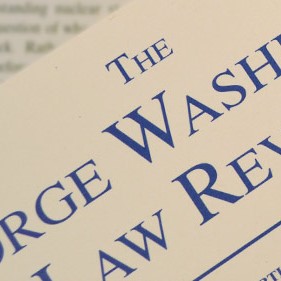Bart M.J. Szewczyk · August 2014
82 GEO. WASH. L. REV. 1118 (2014)
This Article provides the first comprehensive empirical analysis of the use of customary international law by federal courts in statutory interpretation—a particularly important issue given the growth of subject-matter areas covered by international custom and the increased likelihood of its potential overlap with domestic legislation. The analysis shows that courts utilize international custom across a diverse range of fields, not only to construe ambiguous statutes but also to review unambiguous legislation. Some judges and commentators, however, have recently challenged the practical determinacy and democratic legitimacy of this interpretive modality and have sought to abrogate it altogether. Acknowledging the partial validity of these concerns, this Article argues that courts should interpret statutes in a manner that is consistent with custom that is clear and accepted (“established custom”) based on what could be called the Sosa-Charming Betsy doctrine. Conversely, courts should construe statutes independently of vague or disputed custom (“emerging custom”) and articulate statutory interpretation as persuasive evidence of the formation of a new customary norm.
Recognizing the constraint established custom has on statutory interpretation in turn increases the United States’s influence over emerging custom. By engaging in this interpretive exercise within the international community and taking established custom seriously, United States judicial opinions regarding emerging custom also will be taken more seriously. These dual interactions provide a previously unexplored power-maximizing justification for this canon of construction. To be sure, important questions remain regarding the sources of evidence and the uniformity of state practice and extent of opinio juris necessary to identify established custom. But the scholarly and judicial debate should shift to these issues, which might be resolvable only in context and through a case-by-case assessment of particular norms, rather than by seeking overall nullification of this interpretive modality.
Related Content:


